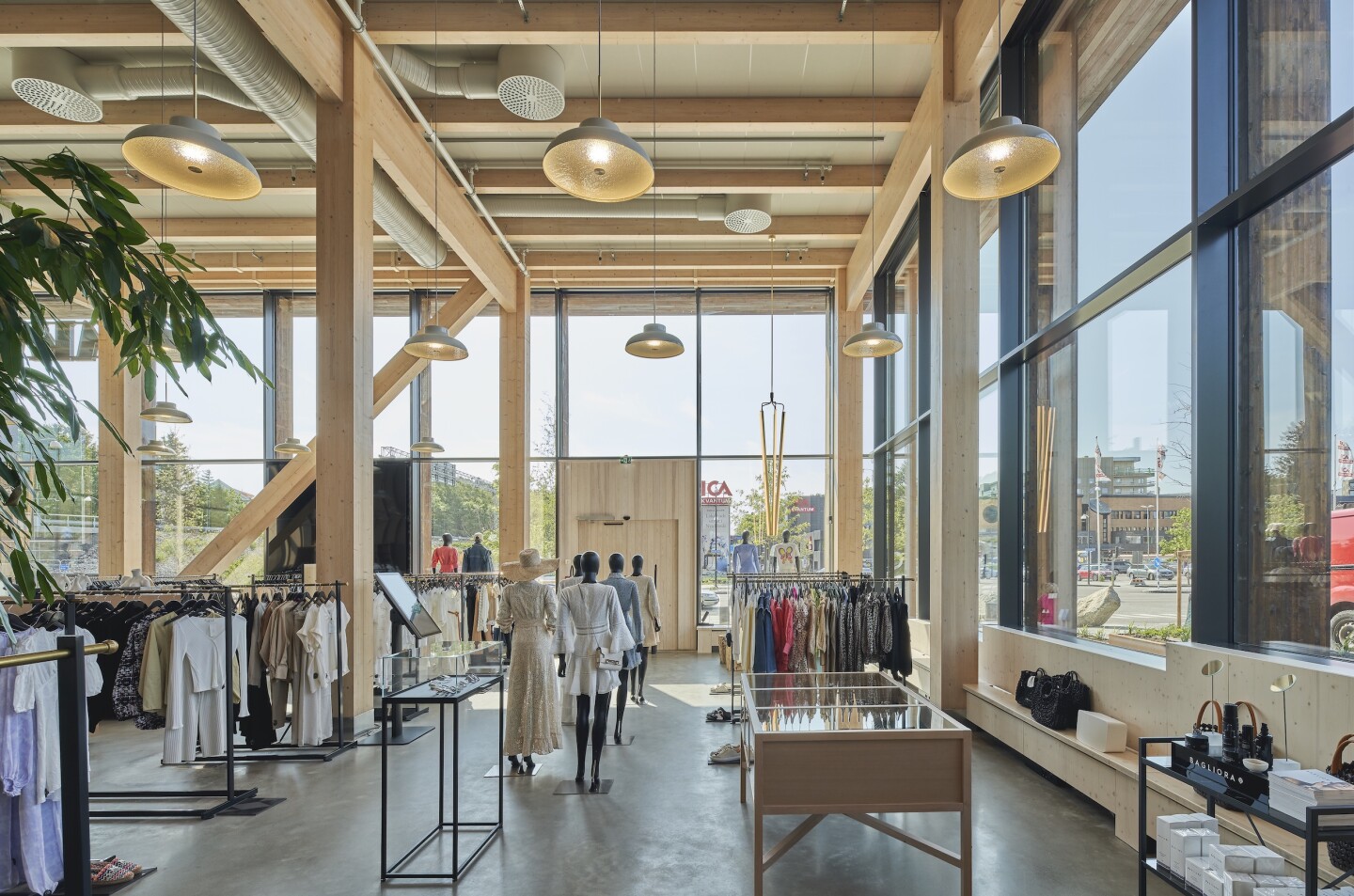White Arkitekter, the firm behind the Sara Cultural Centre, recently completed another ambitious timber building. Named Nodi, the mixed-use office has an unusual overall form that increases in width as it rises and looks almost like it has been turned upside-down.
Nodi is located in Gothenburg, Sweden, and rises to a height of 25.2 m (82 ft). Structurally, it consists of a glued laminated timber (glulam) frame, as well as prefabricated wooden panels, and glazing – there’s no mention of whether concrete is also used for structural support. According to developer Next Step, if you arranged its load-bearing and visible glulam structural elements, end-to-end, they would stretch out some 6 km (3.7 miles). As well as lending it such an eye-catching appearance, the top-heavy design has a practical purpose and helps reduce glare.
“The five stories cantilever out and become larger with each floor, especially towards the south and west,” explains White Arkitekter. ‘In this way, the design of the [office] contributes to a better indoor climate and protects against the sun’s glaring rays without shutting out the light. The slats together with the large glass sections on the entrance level provide transparency to the interior space and provide an inviting focal point for passers-by. On the street level there are premises for shops that become a natural part of the popular Hovås Allé street. And at the very top, overlooking Nya Hovås and its surroundings, all the building’s tenants can enjoy the lush roof terrace and a spacious communal kitchenette.”

White Arkitekter/Lindman Photography AB
Nodi’s interior measures 4,659 sq m (roughly 50,000 sq ft), spread over five floors. It features retail space on its first floor, with office space above and a rooftop terrace area topping it. The building’s interior decor leaves the wooden panels and structural beams on display, highlighting the natural beauty of the wood.
“The benefits of wood are not only a low carbon footprint, but it is also very much an aesthetic choice,” adds White Arkitekter. “In Nodi’s case, we have chosen to expose as much of the timber frame as possible to make visible the simple but expressive aesthetics of wood. Wood contributes to a pleasant indoor environment, as well as more even humidity and temperature.”
Wooden buildings are growing in popularity lately, with projects like the Kajstaden Tall Timber Building elsewhere in Sweden and Canada’s Brock Commons demonstrating the efficacy of tall timber design. Though concerns about fire persist, thanks to modern techniques, heavily engineered wood products can actually perform better than steel in a fire, as explained by the creators of Norway’s Mjøstårnet. Building with wood is something that White Arkitekter is clearly passionate about, and on a related note, the firm has also pledged to produce only carbon neutral buildings by 2030.
Sources: White Arkitekter, Next Step [in Swedish]
Source of Article